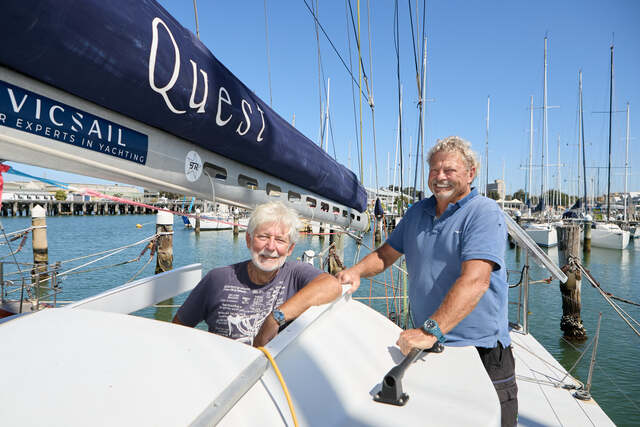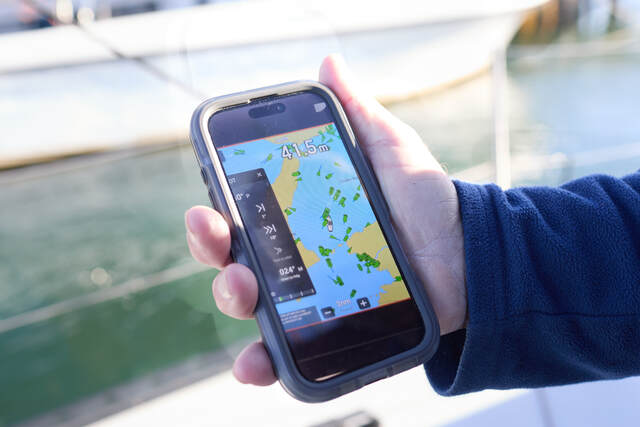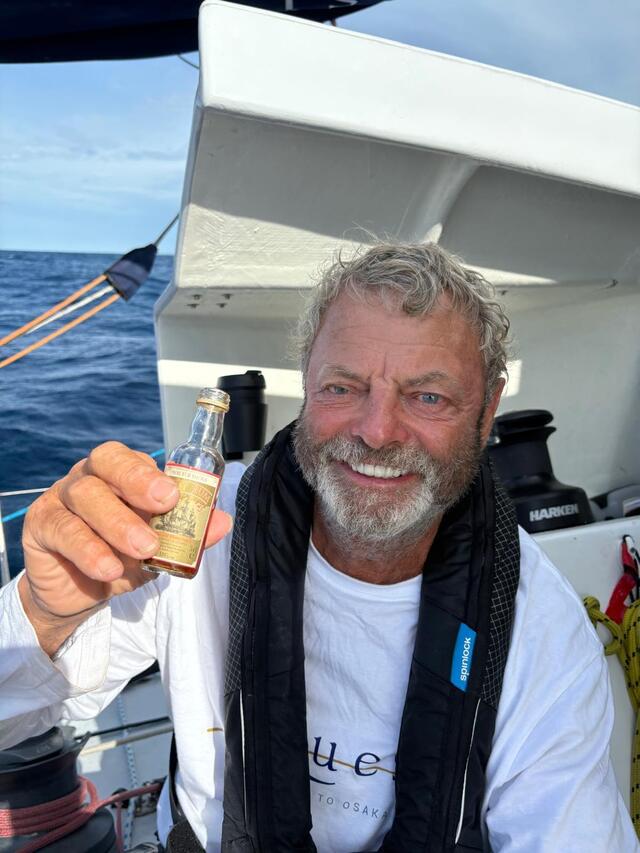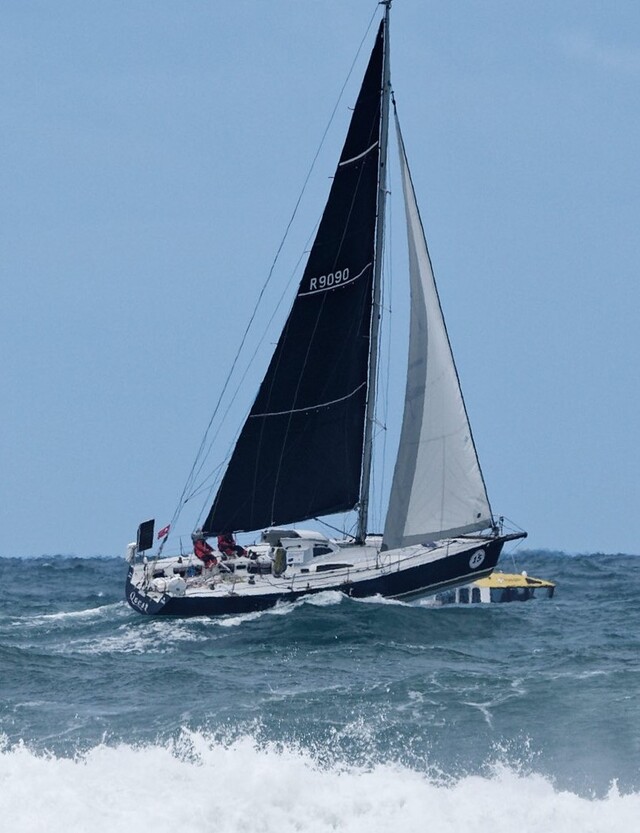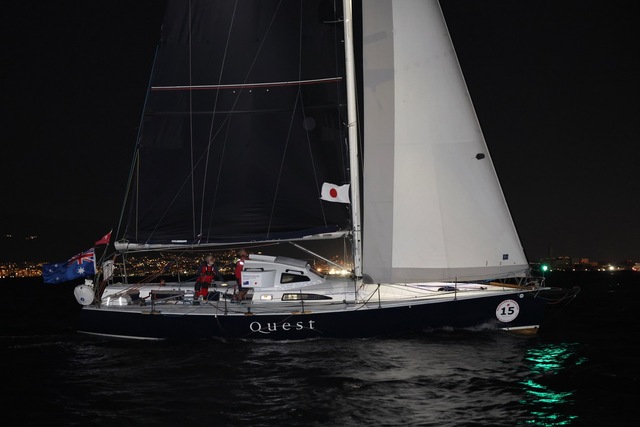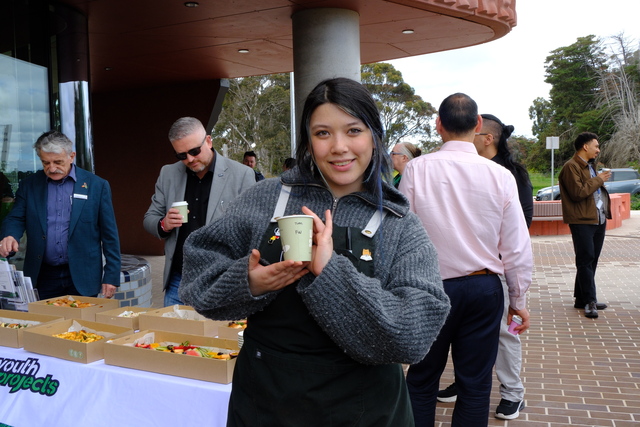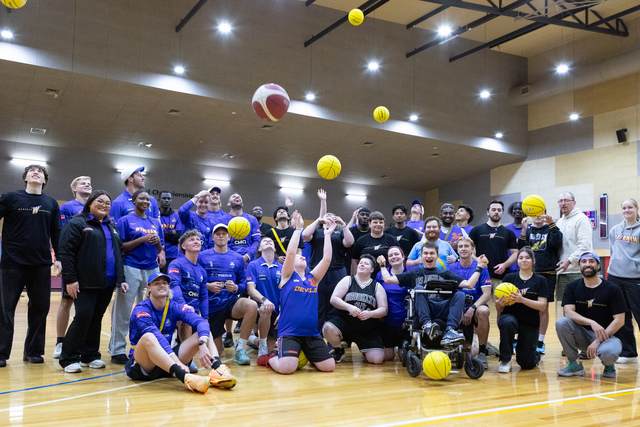For many men, retirement means playing golf or lawn bowls, looking after the grandkids or joining the local men’s shed. For Williamstown’s Rod Gunther and his old mate Peter Tardrew, it’s meant competing in one of the world’s longest and most challenging yacht races. They spoke to Cade Lucas about how they sailed from one end of the Pacific Ocean to the other in their 70’s.
Having just returned to dry land after spending 35 days at sea sailing from Melbourne to Osaka, one would expect Rod Gunther to not want to step on board a yacht, or even so much as an inflatable dinghy, for quite some time, if ever.
Yet by the time this story is published, the 70-year-old sailor from Williamstown will be on his way back to Japan alongside his crew mate and fellow septuagenarian, Peter Tardrew, to do it all again.
“We bought the boat with the intention of selling it,” said Gunther of Quest, the 13 =-metre Nelson Marek 43 which he and Tardrew bought two years ago and piloted to third place out of 17 entrants in the Melbourne to Osaka yacht race from March 17 to April 21.
After crossing the finishing line, the pair spent two weeks in Japan recovering and catching up with family while also trying to find a local buyer for their yacht to avoid having to sail it home.
“But that hasn’t worked so we’re going to get it and bring it back here,” said Gunther, sounding remarkably enthusiastic about the prospect of spending another month or so at sea traversing the Pacific Ocean.
Fortunately for Gunther and Tardrew, the return trip should be an easier more leisurely affair.
Not being in race conditions means they can simply turn on the yacht’s motor whenever there’s no wind, rather than drifting aimlessly for days on end as happened on the way over.
They’ll also have a third crew member with them, easing the workload on the pair who have a combined age of nearly 150.
But like the race itself, the task of bringing the boat back will ultimately be made easier by the fact that Gunther and Tardrew are a pair of old sea dogs that just get along.
“We’re still talking to each other,” laughed Gunther who’s been friends with Tardrew for 50 years and credits their relationship with helping them do so well in the Melbourne to Osaka race.
“That’s the main thing being able to get on with your partner, to make sure you don’t have too much grief with each other, which can happen,” said Gunther of two handed yacht racing, of which the 8000km Melbourne to Osaka is by far the longest and most challenging test.
“There’s nothing,” he said when asked if there was any yacht race comparable.
“People say ‘I’ve done two Sydney to Hobarts,’ well this is nine Sydney to Hobart’s in a row.”
Despite being an experienced sailor, it was the even shorter Melbourne to Hobart, down Tasmania’s west coast, that was the longest yacht race Gunther had competed in prior to the Melbourne – Osaka.
By contrast, 76-year-old Tardrew had done the race once before, way back in 2003.
Now living in Currumbin in south-east Queensland, Tardrew had drifted away from yacht racing since leaving Melbourne and moving north, but after bumping into Gunther at a memorial service for a mutual friend two years ago, he came up with the idea of tackling the race again, this time with his old mate.
By March 17, the pair were on board Quest in waters off Portsea as the starting gun was fired and the field set sail for Japan’s second largest city.
Unlike most ocean races, the Melbourne to Osaka has no set route, so after passing through the heads of Port Phillip Bay and turning left, the yachts were free to head north whichever way they thought best.
According to Tardrew, their chosen route was different to the other 16 yachts in the field.
“We were the only boat that followed what some called the ‘pub crawl’ up the coast,” said Tardrew of he and Gunther’s decision to hug Australia’s east coast, before travelling up to Japan through Papua New Guinea, the Solomon Islands, Guam, and the Marinara Islands.
Most other yachts chose to follow north-south currents 100 miles further out to sea.
“We covered less miles than every other contestant and I think that was a good decision, though it didn’t seem to make much difference in the end.”
Whether hugging the coast like Quest or further out to see like the rest of the field, all contestants struggled with light winds, leading to slower than expected times.
While light winds are common around the equator, Tardrew said conditions were much more docile this time than when he last competed in the race 22 years ago.
“The doldrums were much more frustrating,” he said.
“The light air lasted a lot longer.
“We hung around in the Solomon Islands far too long. We looked at a lot of islands that didn’t go away.”
Not that was all smooth sailing, with the night of April 16 ranking among the roughest Tardrew has experienced in all his decades at sea.
“It wasn’t so much windy, but the slamming of the boat by the waves was extreme. I felt like it was going to break in half.”
The only thing that did break during the race wasn’t on the boat itself, but rather their navigational equipment.
“We had to rebuild the auto pilot twice while we were still in Australian waters,” said Tardrew.
“It failed and we had spare parts and we also had a spare incomplete auto pilot, so we rebuilt the one that failed and then that failed so we rebuilt that spare and that lasted the distance.”
The pair kept in contact with race officials and the outside world through satellite internet connections provided by Starlink and Iriduen, two services that didn’t exist when Tardrew last competed in 2003.
However when comparing that race to this year’s, Tardrew said the most noticeably difference was that he’s now was more than 20 years older.
“The biggest revelation was that I’m no longer able to dance around the boat like a ballet dancer, I crawl around it like an old man,” he said.
For Gunther, managing fatigue was the biggest issue, with their plans for a three hours on-off schedule working better in theory than in practice.
“It didn’t always works like that, especially when there was a bit of work on or things to do,” he said.
“At times we were both pretty exhausted.”
Battling exhaustion and having spent weeks without seeing another vessel, arriving in the busy port of Osaka provided the pair with a shock to the senses.
“There’s 400 shipping movements a day (in Osaka) and they all go through a two-kilometre-wide gap so it’s quite daunting when you look at your trackers and there’s all these ships there, some 300 metres long,” said Gunther.
“It keeps you on your toes.”
Quest finally crossed the finish line in Osaka Bay just after 9pm on April 24, completing the 5500nm race in 35 days, 10hrs and 15 minutes.
“We were ecstatic” said Gunther of their third place finish, three days behind second-placed Japanese boat, 1122TREKKEE and a whopping 13 days behind the winning Australian entry, Alive, who took just 22 days, 22hrs and 48 minutes to sail from Australia to Japan.
Both yachts, Gunther was quick to point out, cost millions of dollars more than their own.
Despite it’s cheaper price-tag, Gunther and Tardrew were unable to find a Japanese buyer for Quest, so after reuniting with family, catching up with competitors and getting used to being back on terra firma (“I reckon it took three days for the bed to stop moving while I was trying to sleep, It was a weird sensation.” said Gunther. ”) both men returned home to Australia last month.
And while they’re now returning to Japan to sail Quest back, both have declared an end to their ocean racing days.
“The main reason I wouldn’t do it again is leaving my wife for so long,” said Gunther of his wife Leonie, who tracked Quest’s progress from her home in Williamstown.
“It’s alright me doing it, but she’s in the house by herself, it’s not really too fair. I’ve done it once I wouldn’t do it to her again.”
For Tardrew, soon to turn 77, completing another Melbourne to Osaka and bringing Quest back to Australia will signal more than just the end of his yacht racing career.
“This is the last time I’m going sailing.”
Who could blame him.

